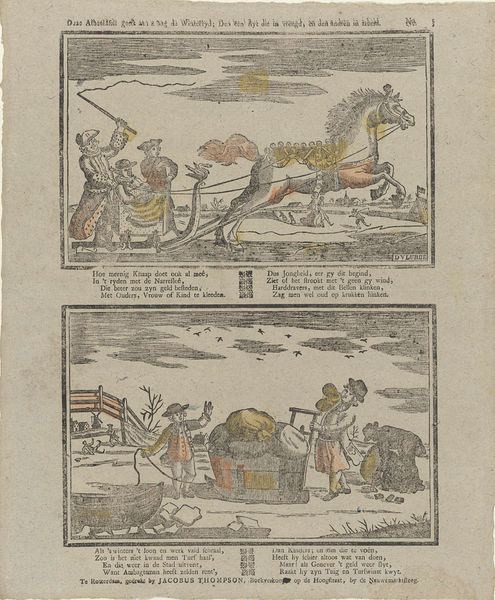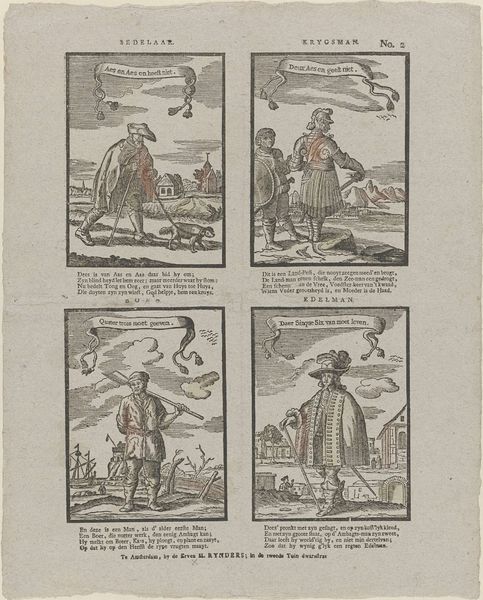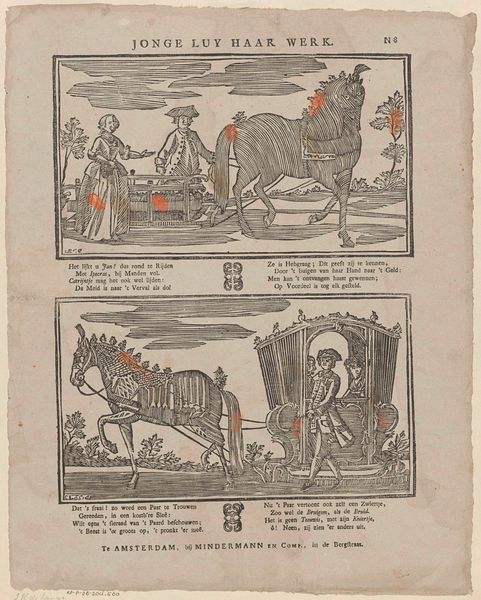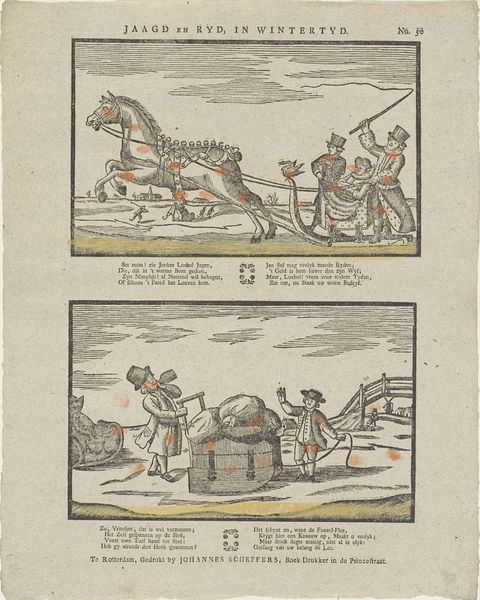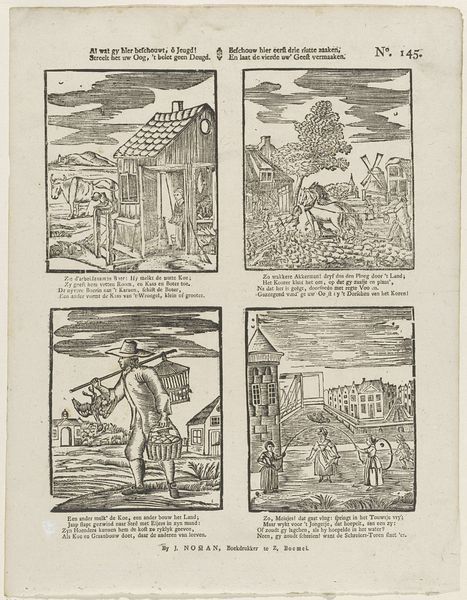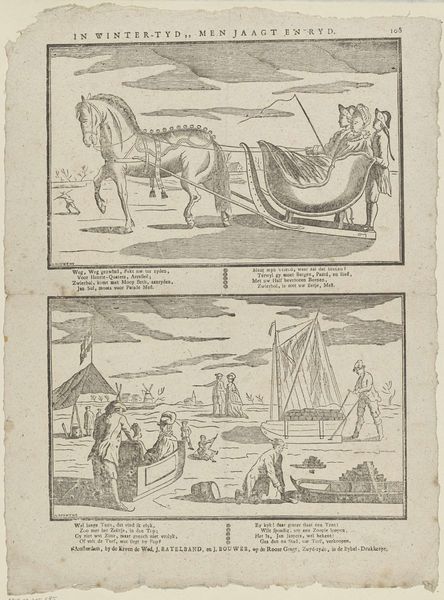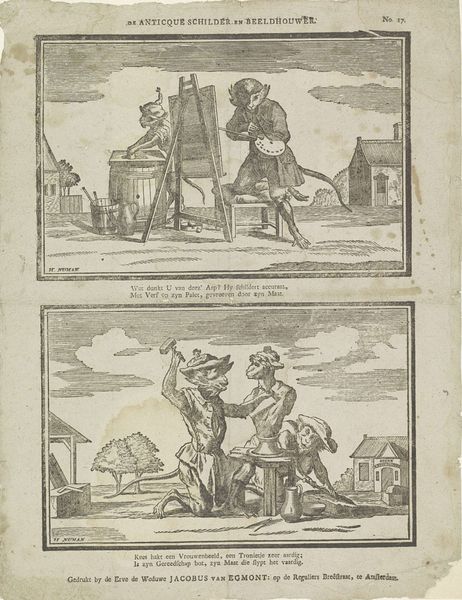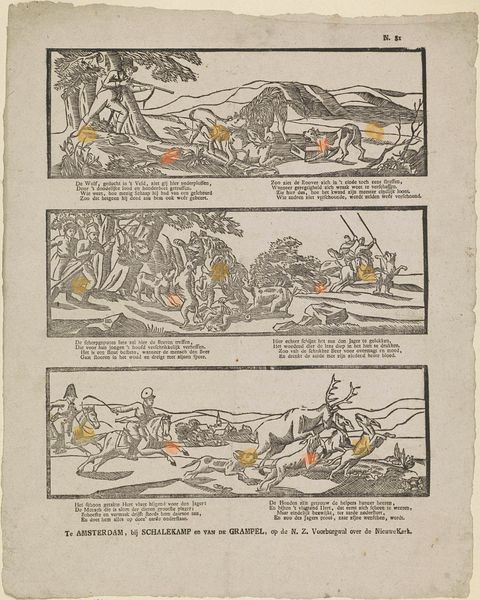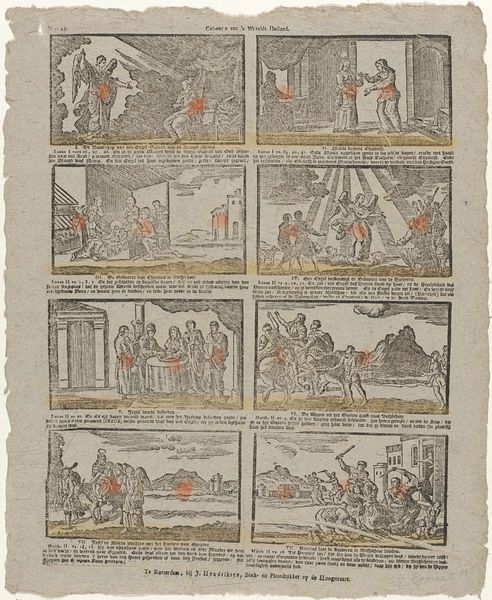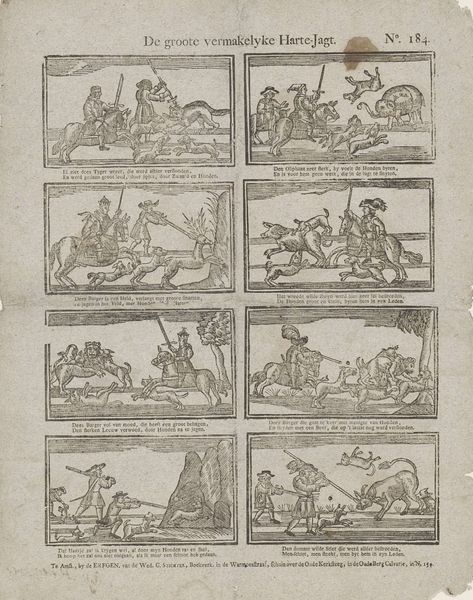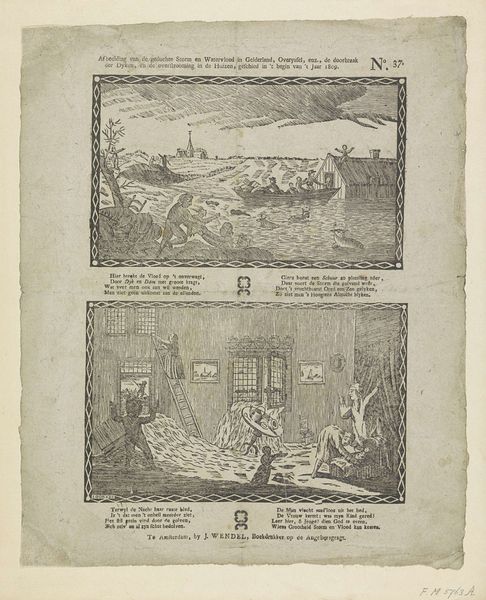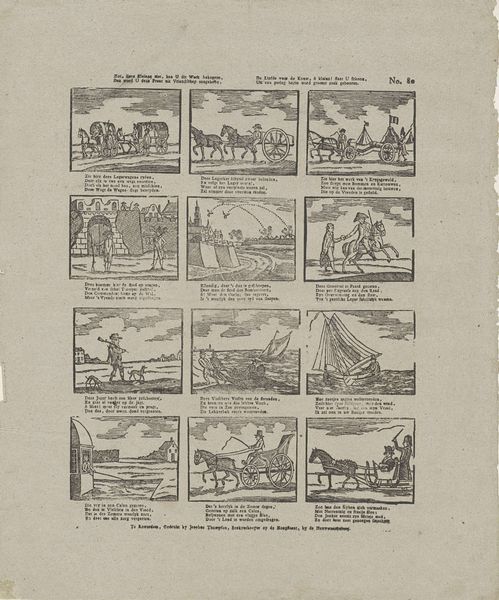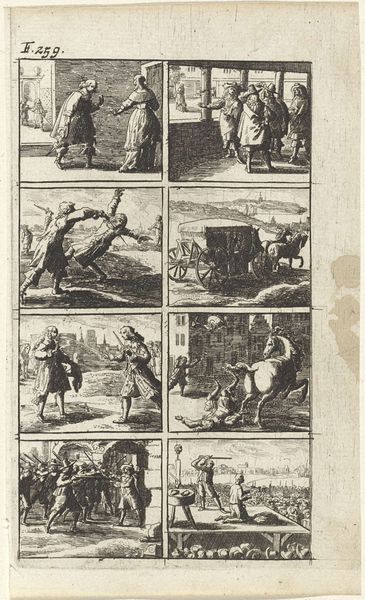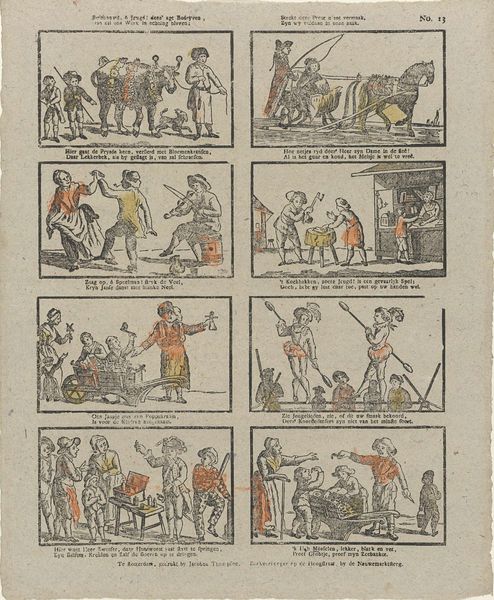
Ô jonge jeugd! de wintertyd, maakt menig een' het hart verblyd 1831 - 1854
0:00
0:00
hermanusnuman
Rijksmuseum
print, engraving
#
narrative-art
# print
#
ukiyo-e
#
folk-art
#
cityscape
#
genre-painting
#
engraving
Dimensions: height 411 mm, width 336 mm
Copyright: Rijks Museum: Open Domain
Editor: This print, "Ô jonge jeugd! de wintertyd, maakt menig een' het hart verblyd," which translates to "O young youth! The winter time makes many a heart glad," is attributed to Hermanus Numan and dates between 1831 and 1854. It's an engraving, and the scenes depicted are charming. It seems to capture everyday life and folk traditions, and perhaps reflect narrative-art tendencies in a folk art or Ukiyo-e kind of style. What resonates most with you as you look at this piece? Curator: What I see are stories embedded within familiar images. Look at the visual shorthand. Notice how the artist conveys winter not just through snow but through implied cold – the bundled figures, the activity of transporting goods. Then there's the clear class division on display between those riding for pleasure and the laborers, and between leisure and work itself, which resonates psychologically even today, and serves as a sign of cultural continuity and memory. What does the whip being so prominent signify to you, for example? Editor: Perhaps it highlights the power dynamics of the time, that it literally shows somebody in control? Or to emphasise speed? I hadn't thought about class until now, and the "O young youth" is perhaps the rider. I'd missed that element completely. Curator: Precisely! The symbolism operates on multiple levels, doesn't it? It's not just a depiction of winter fun. Even the contrast between the upper and lower registers can be read symbolically. Editor: Yes, it now makes a lot of sense: The top section with the horse riding is of people doing it for leisure, contrasted to the people in the bottom half who must haul wood to keep themselves warm. Curator: So what do you take away from this combination of folk-art, ukiyo-e traditions and obvious capitalist undertones from a present-day context? Editor: It gives me much food for thought. This piece acts as both a glimpse into the past and as a cultural object we can reflect on. I'll never look at "genre painting" the same way! Curator: Indeed! And these prints served both decorative and instructional purposes; and understanding those social values is vital in the history of symbolic images.
Comments
No comments
Be the first to comment and join the conversation on the ultimate creative platform.
